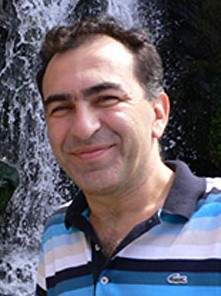
June 1988 was the date of my first contact with the British libraries. I was looking for literature in motivation in physical education in order to develop a proposal for a project leading to an MPhil/PhD in the University of Manchester. Behaviorism was still alive and apart of few studies in motivation in sport there was no application of social-cognitive theories of motivation in physical education. The 1986 Edition of Mosston and Ashworth drew immediately my attention because I had the feeling that the student-centered styles of the Spectrum must be at the core of intervention studies aimed at increasing the motivation of all students. I was excited with the book and I passed it to two influential Greek physical educators: Kostas Mountakis who at that time was in Leeds Metropolitan University defending his PhD thesis in physical education curricula, and Konstantinos Emmanuel who had already started his PhD on teaching styles using an older edition of the Spectrum, under the supervision of prof. Zervas at Athens university. Few years later K. Emmanuel and Y. Zervas invited Muska Mosston in Athens to introduce the Spectrum in Greece. Kostas Mountakis was excited by Muska’s address and he translated the Spectrum in Greek, invited Sara Ashworth to continue Muska’s work in Greece and as the leading person behind the development of the new physical education curriculum in Greece he encouraged the adoption of the Spectrum throughout Greece.
As it happens in life, I had to postpone my research on the Spectrum for many years. One of the major problems in the ‘80s was the lack of psychometrically sound instruments assessing motivational constructs in physical education. Hence, I had firstly to focus on the developments of measures, such as the Learning and Performance Orientations in P.E. Questionnaire (Papaioannou, 1994). This measure was used by my former student and now good friend Nikos Digelidis, who conducted two year-long interventions in 1997 and 1999 in which the inclusion, reciprocal and self-check styles were widely used. The interventions were effective in promoting a positive motivational climate in physical education (Diggelidis, Papaioannou, Christodoulidis, & Laparidis, 2003). Later Nikos Digelidis wrote a book in Greek in which he explained how to apply effectively the teaching styles in real settings. Two of my former students also conducted long-term interventions focusing on the application of the student-centered styles of the Spectrum, Triantafyllos Christodoulidis and Dimitrios Milosis. Both interventions were also successful in promoting students’ motivation (Christodoulidis, Papaioannou, & Digelidis, 2001; Milosis & Papaioannou, 2007).
The years 2002-2006 were the most critical for contemporary Greek physical education. During that time the new national curriculum was developed. It consisted of ten books for physical education teachers and students. Kostas Mountakis supervised the whole project as the counselor of the Greek Pedagogical Institute of Education. Nikos Digelidis was the leading author of two books for grades 5 and 6. The leading author for the book in grade 7 was Marios Goudas, one of the first researchers examining the effects of the inclusion style in the promotion of students’ motivation (Goudas, Biddle, Fox & Underwood, 1995). Finally, I was the leading author for the books for grades 8 and 9. In total, more than 300 daily plans for physical education classes were developed for these books, all of them adopting the student-centered styles that are proposed in the Spectrum. Hundreds of task/criteria-sheets and figures such as those proposed by Mosston and Ashworth (2002) were developed to assist students and teachers in the teaching process.
Today, all Greek students aged 10-15 are required to participate in quality physical education classes where the effective application of the Spectrum is the major challenge for all Greek physical educators. Most of the physical education teachers were not educated how to teach with the Spectrum and they cannot fully capture the whole range of its benefits for students. In combination with the dearth of recourse for in-service training, this makes the implementation of the Spectrum in Greece a real challenge. The sudden introduction of the Spectrum at a nationwide level maybe is unprecedented in the world. Researchers from all continents are invited to keep an eye on this national experiment and to provide suggestions that might help in its success